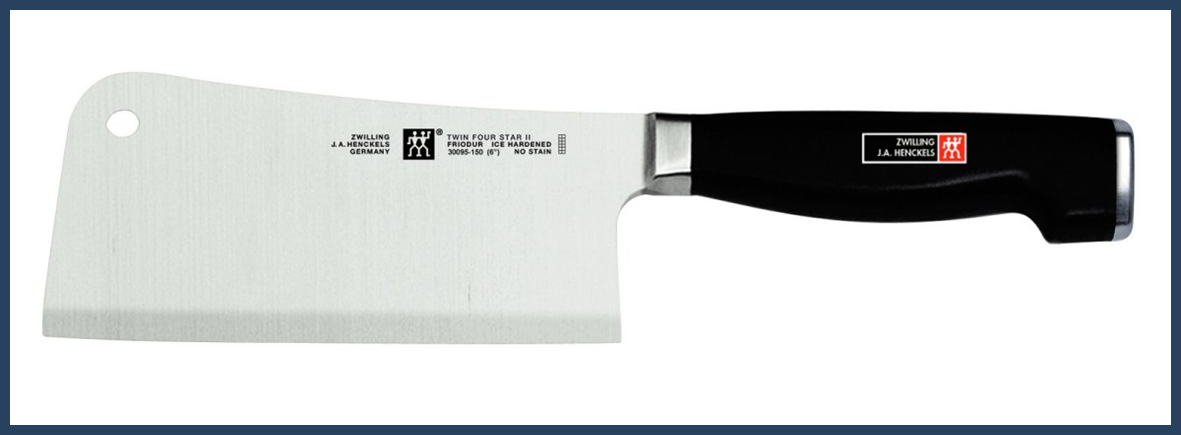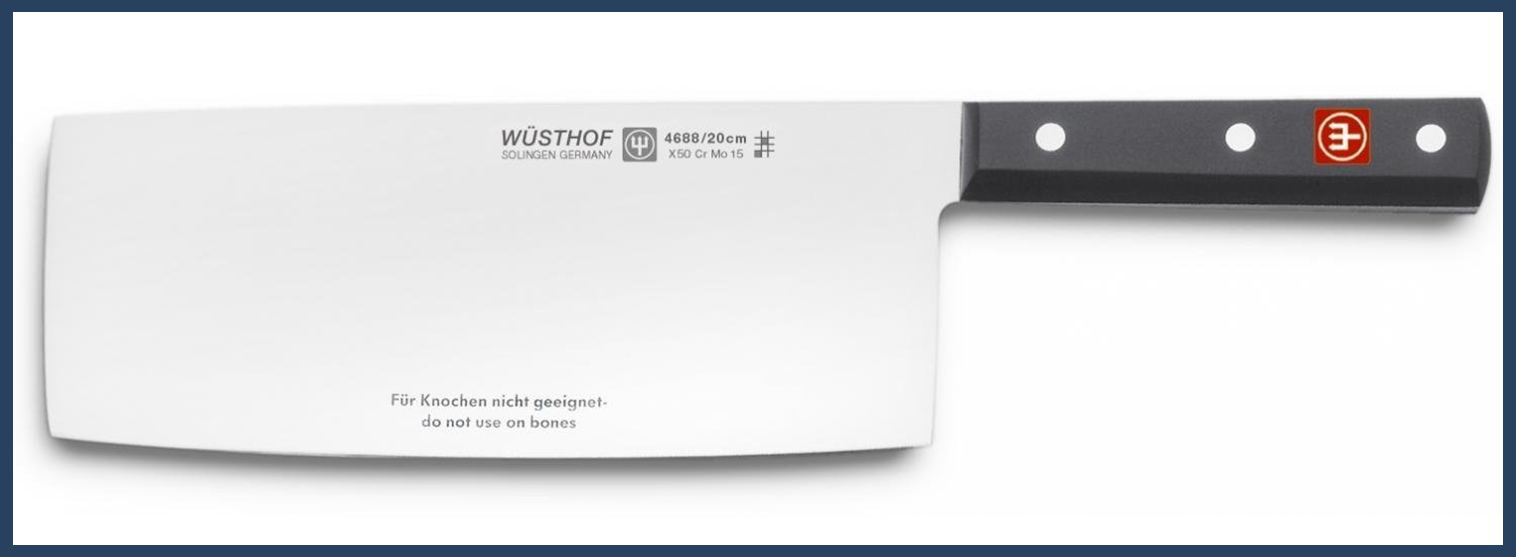Contact InformationJay’s Sharpening ServiceCall us (702) 645-0049
|
| Monday - Friday 9:30AM - 3:30PM |
| Saturday & Sunday CLOSED |
Join our email list for our specials and promos!
SE HABLA ESPANOL |
|
|
Kitchen Knives Blade Styles & Uses
Kitchen Knife Edges
Wavy (Serrated) Edge- especially useful for cutting soft products with a hard crust (bread) or tough skin (sausages and tomatoes). The teeth of a wavy edge knife allow greater pressure to be exerted on the object being cut and generally thinner than a plain edge blade.
Straight Edge
- recommended for cutting raw meat, slicing salmon and chopping vegetables. A straight edge can be sharpened using a sharpening steel. A straight edge is useful for making very precise or clean cuts and should be razor sharp to get the best performance.
Granton Edge
- has hollowed out grooves on the sides of the blade. These grooves fill with the fat and juices of the product being sliced, which allows for thin, even cuts without tearing or shredding the meat. The grooves also help shed the material being cut from the blade helping to reduce sticking.
Paring Knives Paring knives come in various styles, each with a particular function. The paring knife is a vital part of any set of kitchen knives. A paring will usually have a thin 3 to 4 inch blade that usually tapers to a point. Paring knives are used for intricate work and allow for a greater amount of control than a larger knife. In general, all paring knives (with the exception of the bird's beak) can be used for basic utility work in the kitchen.
Bird's Beak Paring Knife- for peeling any round fruit or vegetable such as an apple or orange. The bird's beak parer is also good for intricate work like fluting or other precise carving.
Chef's Paring Knife- use as a miniature cook's knife.
Sheep's Foot Paring Knife- this unique parer has a straight cutting blade. Works well for peeling and paring food.
Wavy Edge Paring Knife- use to cut a crust or skin with a soft inside. Perfect for tomatoes.
Clip Point (Granny) Paring Knife- use to perform tasks like removing eyes from potatoes or pits from olives. Also good for peeling fruit and vegetables.

Paring/Boning Knife- use to remove meat from bones and other detailed cutting jobs.
Boning Knives The boning knife is an ideal kitchen knife for removing meat from bones and cutting fish or poultry. Boning knives can have different widths of blades as well as varying stiffness. The curve of the blade offers greater control when making precise cuts.

Narrow Boning Knife- Use a narrow boning knife on ribs and chops to cut easily through the bone and cartilage.

Wide Boning Knife- Use a wide boning knife for chicken and pork.

Curved Boning Knife- Use a curved boning knife for a better working angle when cutting close to and around the bone.

Chef's Knives- The Chef's knife is one of the most used kitchen knives and can be used for everything from chopping to slicing fruits and vegetables. Most chef's knives have a broad blade that curves upward towards the tip to allow the knife to rock for fine mincing. The spine of the blade is thick to add weight and strength. Many chef's knives will have a bolster, or metal collar between the blade and handle. The bolster helps prevent the knife from slipping. Chef's knives come in blade lengths of 6, 8, 10 and 12 inches. Longer blades can be more difficult to control, but make for faster cuts. Shorter blades allow for greater control, and are generally suited to chefs with small hands.

Carving & Slicing Knives- Carving and slicing knives are generally used for slicing meats. These knives usually have long blades that allow for cleaner cuts, and pointed tips. One exception is the roast beef slicer that has a round tip. Slicing and carving knives can be 8 to 14 inches long, and have thinner blades than chef's knives. The thinner the blade means chopping with a carver or slicer can damage the knife; a sawing motion is ideal for cutting with one of these knives. A long blade allows large pieces of meat to be cut into clean, even slices. Some slicing and carving knives will also have a granton edge.

Bread Knives- The bread knife is thick-bladed knife used for cutting loaves of bread. Bread knives generally have 8 to 9 inch blades with serrated edges for cutting through thick, hard crust. The serrations on a bread knife are very deep, and are too large to cut fruits and vegetables effectively.

Santoku Knives- The Santoku Knife is the Japanese version of the chef's knife. The santoku is excellent for chopping vegetables and the wide blade works well for scooping sliced food off a cutting board. The santoku can also be used to slice meat, and has a narrow spine for making thin cuts. The wide blade can be used to scoop diced vegetables or other ingredients into a pot or bowl and is also good for crushing garlic. The curved blade helps the rocking motion used for chopping food, and a santoku can be used on most ingredients such as fruit, vegetables, and even meat. Some santoku knives will also feature a granton edge.

Cleavers- The cleaver knife is wide-bladed, thick-spined knife that can be used to cut through meat or poultry bones. The cleaver uses its weight to cut through tough food with a chopping motion. The thick, heavy blade on a cleaver is not meant for slicing, but its width makes it ideal for pulverizing meat, or crushing seeds or garlic.

Chinese Cleavers- The Chinese cleaver knife is wide-bladed, narrow-spined knife that can be used to chop through meat and vegetables. It can also be used to remove meat from bones, and like the santoku is good for scooping ingredients into cookware. Chinese cleavers are good for tenderizing meat and crushing garlic, and other tasks that involve slicing. A Chinese cleaver should not be used to split bones since the blade is thinner.
Utility Knives- Utility knives are mid-sized knives used for miscellaneous cutting. The blade is anywhere from 4 to 7 inches, larger than a paring knife but not as large as a chef's knife. The utility knife is good for cutting larger vegetables and sandwich meats that are not large enough for a chef's knife. These knives can come in plain and serrated edges, and are sometimes referred to as "sandwich knives".

Tomato Knives- The tomato knife is similar to the bread knife except it is smaller and the serrations are finer. The blade will have a serrated edge for easily cutting through tough skin and a forked tip for picking up slices of food.

